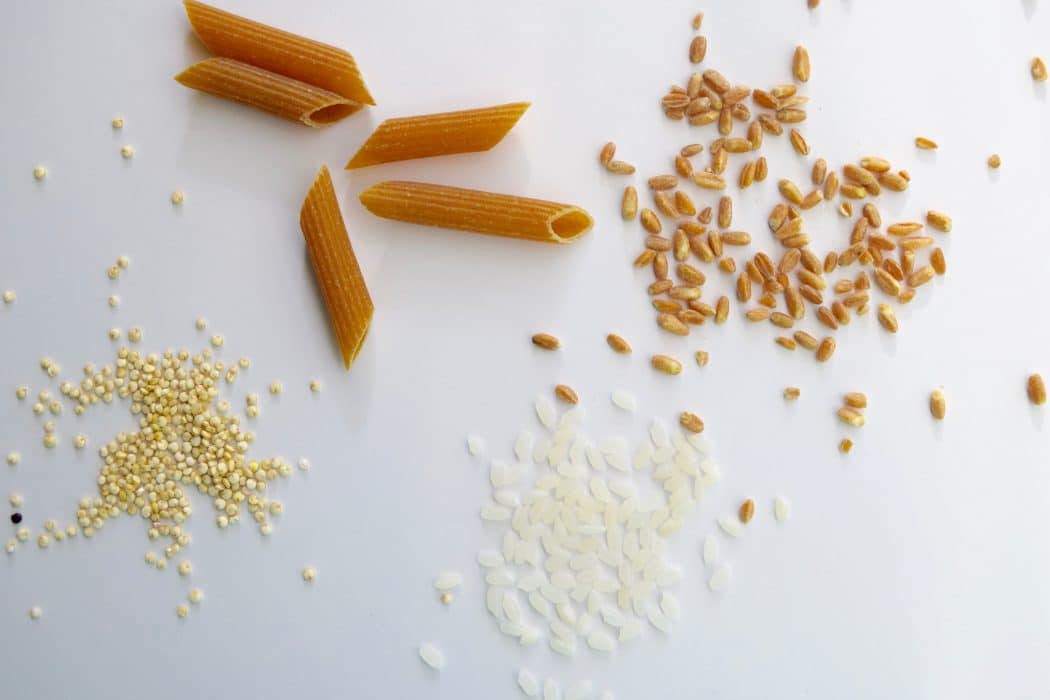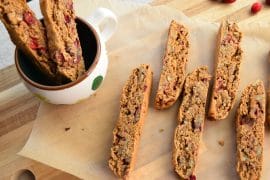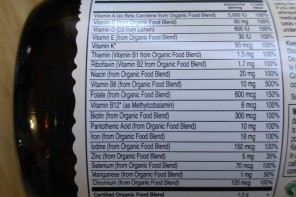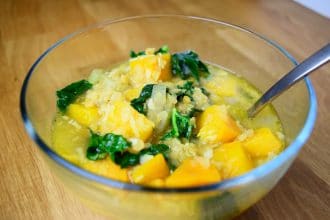This is the third installment of my “Ultimate Cooking Guide” series. You can read part 1 here and part 2 here.
This next part is all about, what I feel, is the heart of a dish. The grains, pastas, and starches that bulk up a meal and add valuable nutrition and fiber. It’s broken down in pasta, grain, and starches and my goal was to simplify cooking with each of these.
Guide to Pasta:
Pasta is fairly easy to cook, just boil it in salted water until it’s tender. But with all the shapes and varieties, it can feel daunting to go beyond spaghetti or penne. Fear not! Cooking with various pastas can be really simple.
Flat noodles such as fettuccine, linguine, pappardelle, and tagliatelle: Flat noodles are very versatile. The thinner the noodle, the lighter the sauce needs to be. Fettuccine and linguine can take rich, creamy sauces. Pappardelle and tagliatelle can withstand hearty and thick sauces.
Round noodles such as angel hair, spaghetti, and capellini: Lighter sauces work well with delicate pasta like round, thin noodles. Simple tomato sauces or garlic and olive oil with the addition of herbs or vegetables.
Shaped pasta such as casarecce, gemelli, farfalle, conchiglie, rotini, orecchiette, and fusilli: These pastas have unique textures and are hearty enough for heavy sauces. Pair with bold, textured, and interesting sauces.
Tube pasta like macaroni, ditalini, penne, rigatoni, ziti, calamari, cavatappi, and campanelle: The purpose of the tube is to catch sauce for better bites. Tube pastas work with nearly every pasta dish; baked, in soups or salads, and with any sauce. Smaller tube pastas are great for creamy or liquid sauces because it makes it’s way into the tubes. Larger tube pasta works best with sauces that have bits of vegetables for the tubes to grab onto. Ridged pasta like penne rigate grip onto sauce like pesto well.
Guide to Whole Grains:
Whole grains, although they may cook in a similar way, require varying degrees of liquid and time before becoming tender. Here are some commonly used grains and how to cook them.
Amaranth:
Bring 3 cups water and 1 cup amaranth to a boil. Reduce heat to simmer and cook uncovered for about 20 minutes, until liquid is absorbed.
Barley
Bring 2 1/2 cups water or broth and 1 cup pearl barley to a boil. Cover and turn down the heat to simmer. Cook for about 40-50 minutes, until the barley is tender and the liquid absorbed.
Bulgur
Bring 1 1/2 cups water or broth and 1 cup bulgur to a boil. Cover and reduce heat to simmer. Cook for about 15 minutes, until the liquid is absorbed. Or, pour 1 1/2 cups boiling water or broth over 1 cup of bulgur. Let stand for about 30 minutes.
Farro
Bring 3 cups water or broth and 1 cup farro to a boil. Cover and turn down the heat to simmer until the farro is tender, about 20 minutes. Drain the remaining liquid.
Millet
Bring 2 1/2 cups water or broth and 1 cup millet to a boil. Cover and turn down the heat to simmer. Cook for about 20 minutes, until the millet is tender.
Quinoa
Bring 2 cups water or broth to a boil. Add 1 cup quinoa and simmer covered until tender and the liquid has absorbed, about 20 minutes.
Rice
Bring 2 1/2 cups water or broth and 1 cup rice to a boil. Cover and turn down the heat to simmer. Cook for about 40-50 minutes, until the rice is tender and liquid absorbed.
Spelt
Bring 2 cups water or broth to a boil. Add 1 cup spelt and reduce heat to simmer. Cook for about 1 hour, until spelt is tender.
Steel Cut Oats
Bring 4 cups water to a boil with a little salt. Add 1 cup steel cut oats and reduce heat to simmer. Cover and cook for about 30 minutes, until liquid is absorbed and oats are tender.
Wheat Berries
Bring 4 cups water or broth and 1 cup wheat berries to a boil. Cover and reduce heat to simmer. Cook for an hour, stirring occasionally, until the wheat berries are tender. Drain before serving.
Guide to Starches
High starch potatoes like russet: These potatoes get very soft and light, which is why they’re great for baking whole, mashing, or frying. Their lightness helps them to absorb sauces and flavors.
Medium starch potatoes like yukon and purple potatoes: These potatoes also get very soft, but their flesh is firmer and holds up better when cooked. Great for roasting, boiling, or for salads, but generally an all purpose potato.
Low starch potatoes like white rose, fingerlings, and red: Low starch potatoes are perfect for potato dishes that require they hold their shape. Scalloped dishes or potato salads are perfect for these.





